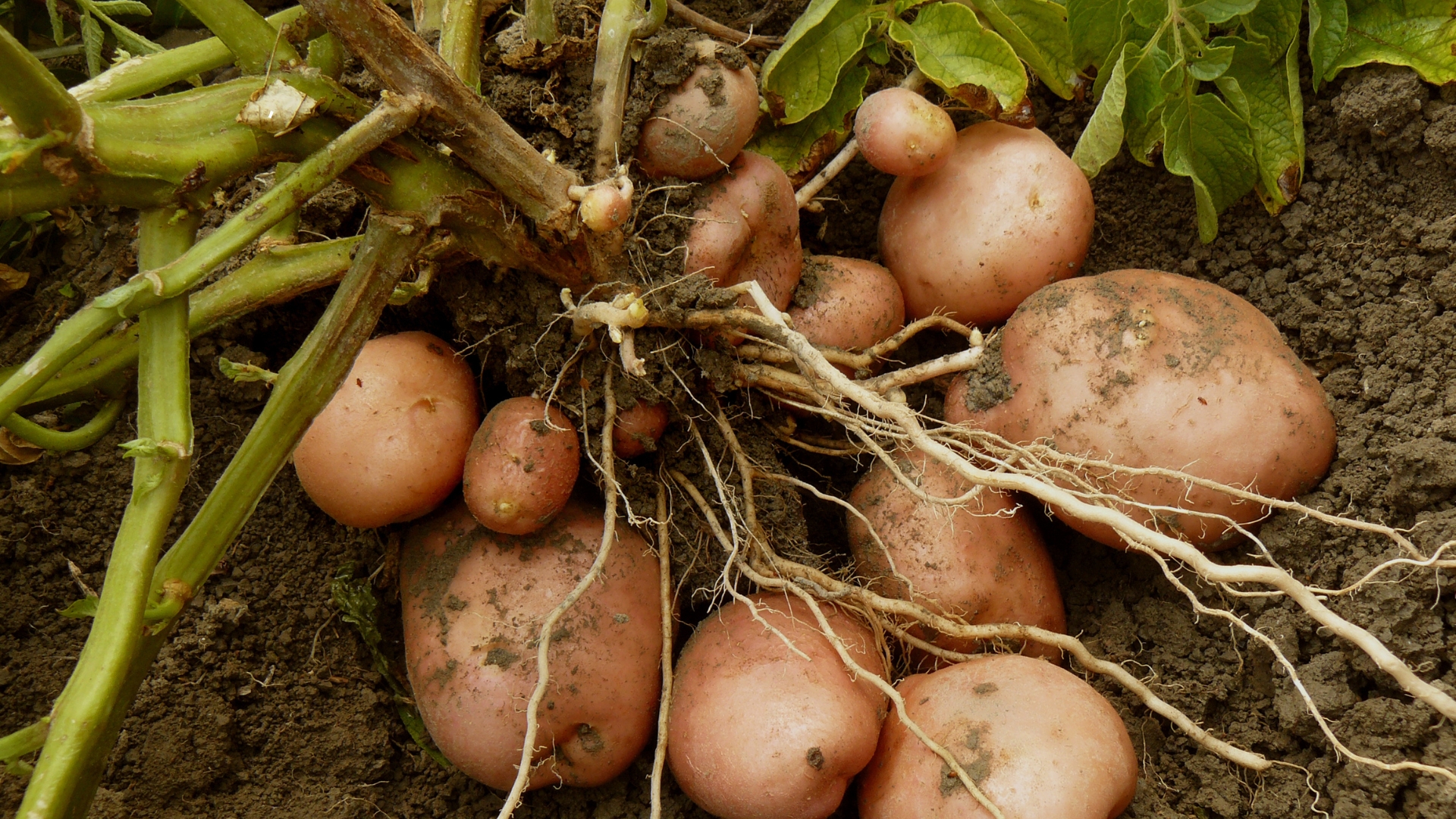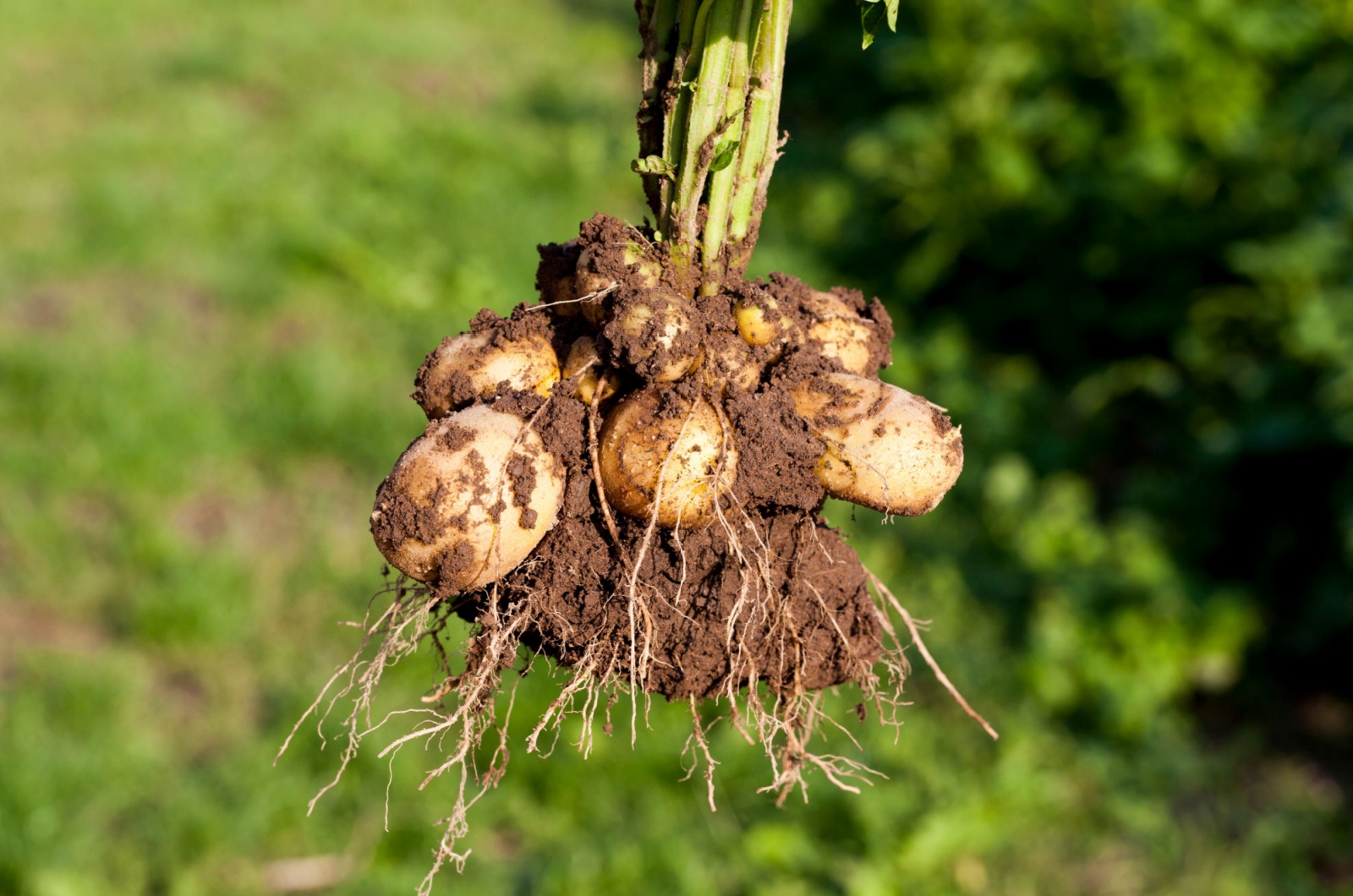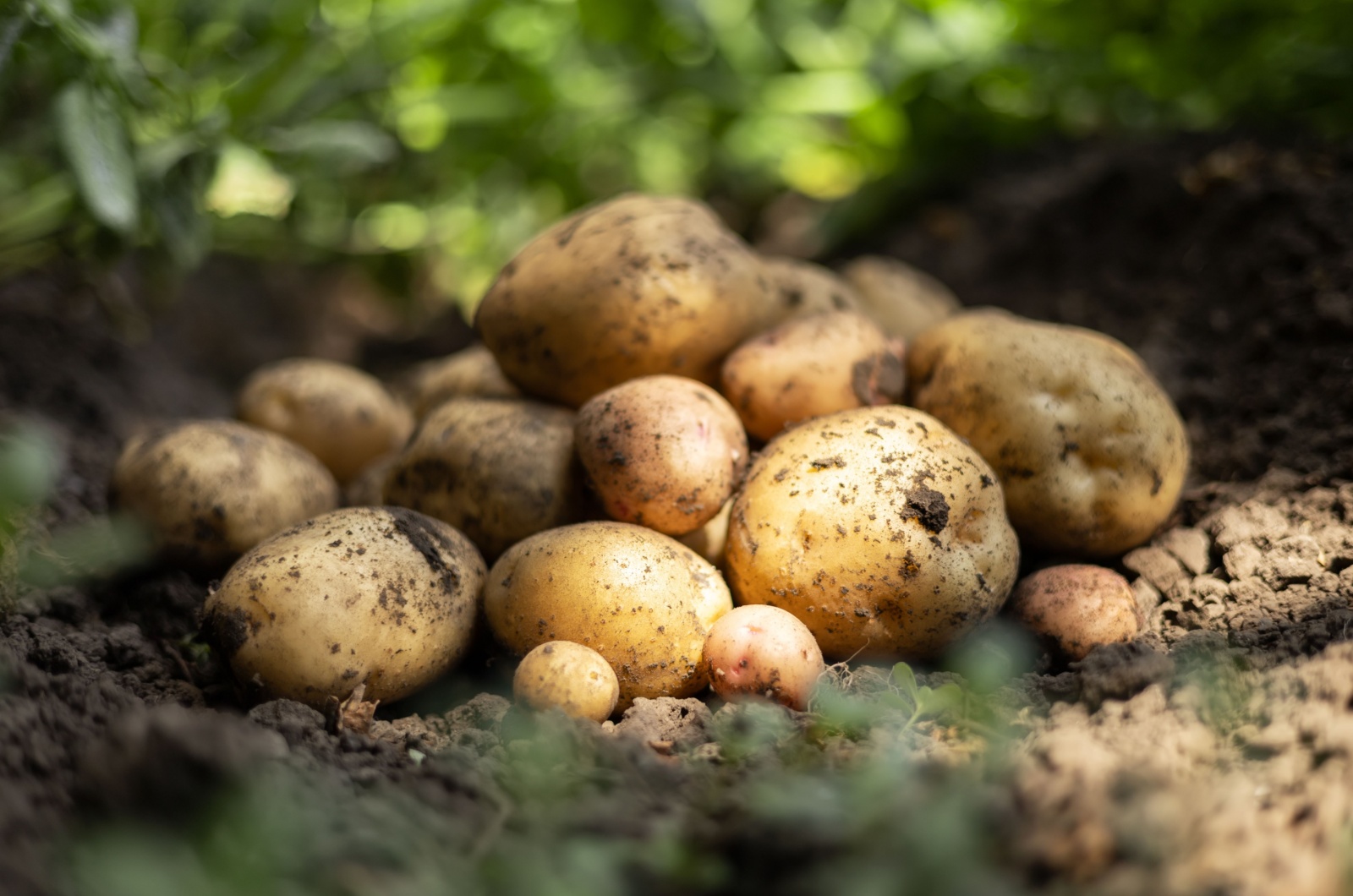Potatoes keep us guessing; by the time they’re ready for harvest, we’ve forgotten where we even planted them. Out of sight, out of mind, right? I mean, they grow under the ground and we can’t really see what’s going on down there.
It’s not rare for gardeners to harvest their potatoes as soon as they spot a few flowers on the plant. I probably do it more often than I should…
And after all that time, you pull them out and find slim pickings, despite the firm and thin-skinned tubers. Talk about waiting forever for a lunch that won’t fill the plate!
But what if I told you all is not lost, and those tiny tubers could still turn the tide for a second crop? Sounds too good to be true, right? The key is in one clever trick!
The Hack Revealed!
Once you dig out your potatoes and there are small tubers next to the large ones, you have the opportunity to get a second crop. You see, by chopping off the vine and replanting it in a new location in your garden, you’ll get a whole new plant.
The first thing you need to do is carefully lift the entire potato rootball and small tubers out of the ground.
Any sizable potatoes shouldn’t be replanted and you can use them to make your favorite dinner. Leave the smaller tubers on the plant.
Then, prune your potato plant hard so that only 6 inches of the stem is left. Replant it in your veggie bed or use a container if you have limited space.
You can also try removing younger shoots from your potato plant and replanting them. But in this case, you must make sure each sapling has a few roots attached or this experiment won’t work.
The first time I tried this hack, my replanted potatoes started wilting. Luckily, this won’t affect the growing process in the long term, so don’t worry. It typically takes them a few days until they recover fully and adapt to new surroundings.
Remember that these veggies are super hardy and they can actually come back even if a storm hits them. Cutting them back to the soil level will help them get back on track soon.
But Is the Harvest + Replant Method Always A Good Option?
During my gardening journey, I’ve always been into trying new things and my motto is nothing goes to waste. But is harvesting these young tubers and planting them somewhere else always a good choice?
For starters, this technique works only for those who enjoy eating early potatoes. You can start harvesting new potatoes approximately two months after planting. Some tubers will be firm and large, whereas the younger ones will be replanted.
If you want to store your potatoes, then you should wait until they’re fully mature and have thicker outer skin.
Some gardeners believe that this method isn’t good for potatoes in the long term. They claim that harvesting tubers limits the plant’s growth and it focuses all its energy on growing new leaves.
They advise pruning your potatoes after flowering because the plant starts putting all its energy into producing larger and more robust tubers. But the thing is the plant is already spent at this point so pruning it won’t result in a second crop.
If you live in warmer climates, then you’ll most likely find some potatoes in spring if there are any forgotten spuds.
For those hungry for a second harvest and early potatoes, this hack hits the spot. Use our advice and treat yourself to the most mouthwatering potatoes!



